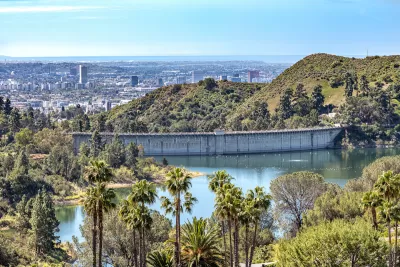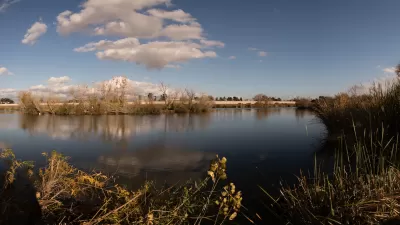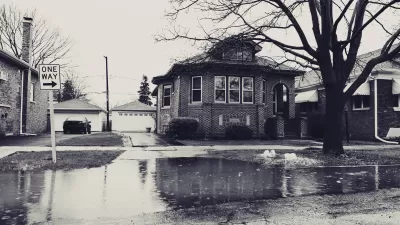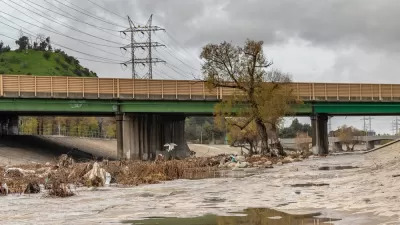A new study reveals that if California could collect and treat more stormwater in cities, it could provide enough water to supply a quarter of the state’s urban population.

Cities across the United States face a range of water challenges, including intensifying impacts of flooding and drought, water scarcity risks, constraints on traditional water supplies facing peak water limits, and water pollution. Innovative ways are needed to address these challenges and improve long-term water resilience.
Stormwater capture is a promising approach. Specifically, It can help narrow the gap between water supply and demand by augmenting and diversifying water supplies. It can also mitigate impacts on communities from intensifying flooding and drought and reduce water pollution. In addition, stormwater capture offers additional co-benefits, such as greening communities and cooling urbanized areas.
As reported by Rachel Becker in this article, a new assessment by the Pacific Institute, in partnership with 2NDNATURE, quantifies the volumetric potential of urban stormwater runoff across the country. The study estimates urban areas have the potential to generate 59.5 million acre-feet of stormwater runoff annually on average. This is equivalent to an annual average of over 53 billion gallons per day. It equals 93 percent of municipal and industrial water withdrawals in 2015, the most recent year with available data.
With respect to California, the analysis found that the Golden State sheds nearly 2.3 million acre-feet of precipitation from pavement, roofs, sidewalks and other surfaces in cities and towns annually. If it were captured and treated, that would be sufficient to supply over a quarter of California’s urban water use or almost 7 million Southern California households each year.
FULL STORY: California’s urban runoff flows down the drain. Can the drought-plagued state capture more of it?

Planetizen Federal Action Tracker
A weekly monitor of how Trump’s orders and actions are impacting planners and planning in America.

Restaurant Patios Were a Pandemic Win — Why Were They so Hard to Keep?
Social distancing requirements and changes in travel patterns prompted cities to pilot new uses for street and sidewalk space. Then it got complicated.

Map: Where Senate Republicans Want to Sell Your Public Lands
For public land advocates, the Senate Republicans’ proposal to sell millions of acres of public land in the West is “the biggest fight of their careers.”

Maui's Vacation Rental Debate Turns Ugly
Verbal attacks, misinformation campaigns and fistfights plague a high-stakes debate to convert thousands of vacation rentals into long-term housing.

San Francisco Suspends Traffic Calming Amidst Record Deaths
Citing “a challenging fiscal landscape,” the city will cease the program on the heels of 42 traffic deaths, including 24 pedestrians.

California Homeless Arrests, Citations Spike After Ruling
An investigation reveals that anti-homeless actions increased up to 500% after Grants Pass v. Johnson — even in cities claiming no policy change.
Urban Design for Planners 1: Software Tools
This six-course series explores essential urban design concepts using open source software and equips planners with the tools they need to participate fully in the urban design process.
Planning for Universal Design
Learn the tools for implementing Universal Design in planning regulations.
Heyer Gruel & Associates PA
JM Goldson LLC
Custer County Colorado
City of Camden Redevelopment Agency
City of Astoria
Transportation Research & Education Center (TREC) at Portland State University
Camden Redevelopment Agency
City of Claremont
Municipality of Princeton (NJ)





























